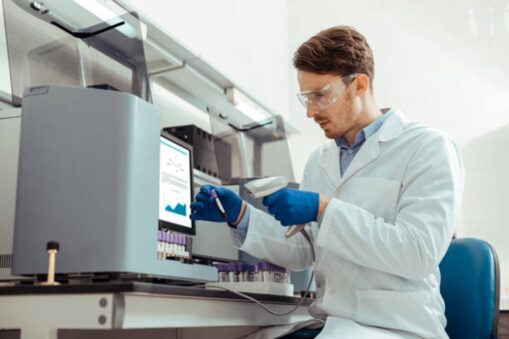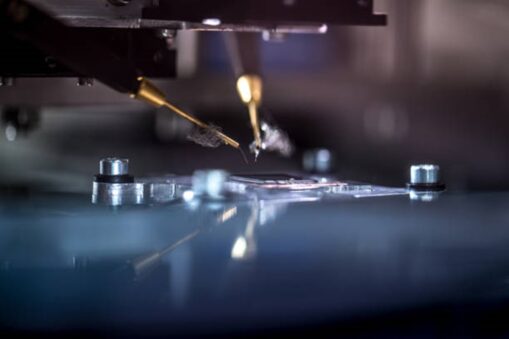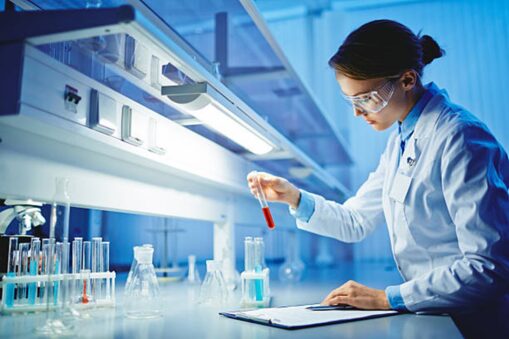- Your cart is empty
- Continue Shopping
Best tips for Maintaining Laboratory Equipment
- Lab Equipment
- Posted on
-
by Siby
- 0 comments

Taking newly prepared samples to an instrument and learning that it is broken is one of the most annoying things in the lab. It’s critical to keep laboratory equipment in good working order. Whether you’re trying to keep within budget or ensuring that lab operations run smoothly, the first step should always be equipment maintenance.
The advantages of proper lab upkeep don’t stop there. Because the equipment is generally one of the most expensive investments in a lab, taking good care of what you already have and thus avoiding unneeded repurchases is an added benefit.
Here are some helpful hints for keeping laboratory equipment in good working order:
General Cleaning:
One of the most straightforward, economical, and apparent methods to maintain your lab in good form is to keep it clean, yet it’s surprisingly more disregarded than you may imagine.
It is recommended to:
- Wipe off the exteriors of all equipment daily.
- Weekly deep clean all equipment.
- Regularly clean microscopes with a 7:3 mixture of ether and alcohol to ensure they are clean enough to produce the most accurate findings.
Consult the manual or the lab manager for any specific cleaning techniques for demanding equipment. Hematology equipment, for example, requires a six-monthly engineer check, a weekly analyzer surface clean, and a monthly HC control check.
Consider hiring a competent professional to clean difficult things; third-party equipment maintenance and cleaning might be cost-effective.
Repairing:
Naturally, laboratory equipment may need to be changed totally in some cases. Sometimes, though, basic repairs are sufficient. Minor repairs, such as replacing parts, should be done as and when required. This can considerably extend the working life of major laboratory equipment. When it comes to larger pieces of machinery, some sections will wear faster than others. Pay close attention to whether elements of your equipment are beginning to show symptoms of wear and accordingly implement a preventative maintenance schedule.
Refurbishing:
Refurbishing entails dismantling all laboratory equipment and thoroughly cleaning, polishing, and lubricating each component. Refurbishing should be done regularly. The pieces are then reassembled to restore the machine to its original functioning condition.
Calibration:

Calibration is a preventive maintenance procedure that compares an equipment’s output to industry standards. This quality must meet industry standards so that the outcomes’ functionality and correctness are consistent. The laboratory will save a lot of time and money if calibration is done regularly.
Purchase High-Quality Equipment from Trusted Vendors:
You may have a specific budget, but that doesn’t mean you should buy low-quality equipment just because it’s cheap. It may not work correctly or perhaps break down repeatedly. As a result, always invest in high-quality science equipment and only purchase it from reputable sellers.
Checklist for maintaining laboratory equipment:
Every day, clean up:
It’s a good idea to establish a simple housekeeping checklist to remind staff of the daily tasks that need to be completed, such as clearing and cleaning countertops, sweeping floors, and sanitizing the lab’s most common touchpoints.
Examine your safety equipment:
It’s critical to emphasize that the condition and quality of PPE must be maintained before beginning any activity. Check your employees’ eye and facial protection, gloves, footwear, and hearing protection equipment for signs of wear and tear regularly.
Handwashing station replenishment:
Handwashing sinks should be kept clean, and disinfectant soap dispensers and towels should be easily accessible. If the sink becomes blocked, the problem must be addressed to avoid backup and contamination.
Keep emergency stations operational:

Maintain emergency eyewash and shower stations as required, and ensure effective operation by activating components in all stations many times a week. Arrange for skilled technicians to inspect the station s regularly.
All lab equipment should be cleaned:
Before starting a project, make sure all necessary equipment is clean. Equipment must be cleaned according to set standards once the project is completed.
Make a list of what’s in the refrigerator and freezer:
It’s critical to keep track of any products that need to be stored in refrigerators or freezers and vital information like the contents’ origin and expiration dates. Regular rotation makes inventory management and prompt disposal of expired commodities much easier.
Use the correct glass cleaning methods:
Routine glassware cleaning will be possible with a lab washer-disinfector with hot-air drying capability. Also, ensure your employees know the many manual processes and tools for cleaning glassware, such as beakers, flasks, pipettes, and funnels.
Disposal of shattered glass:
Designate a bin for shattered glass and objects with sharp edges, and maintain it in a convenient place for all employees. Allow the trash to fill only halfway; discard the contents when the bin is half-full.
Examine your emergency equipment:
Schedule frequent fire safety and sprinkler system inspections in your lab. Fire extinguishers should be periodically maintained to ensure they’re entirely charged and adequately stored, and first aid kits should be kept in conveniently accessible spots.
The Importance of Regular Laboratory Equipment Maintenance and Repair:
Maintain Medical Equipment with Timely Attention:
With the current medical environment’s heightened attention on patient safety, reputable hospitals and lab practices must focus on steps to prevent adverse outcomes caused by medical errors. Laboratory gadget maintenance and repair should always be performed by qualified and adequately trained employees or technicians. All equipment parts must be checked and validated, and any faulty components must be replaced. Repairers may be asked to notify customers ahead of time if a unit attached to the equipment is malfunctioning. All such gadgets should be inspected regularly and regular reports should be sent to the laboratory or institution’s head.
Specific medical equipment necessitates lubrication and oiling. The oil and liquid used should also adhere to the manufacturer’s specifications. If you have the budget, you can hire a maintenance crew, but you can hire reputable third-party companies if you don’t.
When buying lab equipment, keep the following in mind:

When purchasing the necessary laboratory equipment, the first thing to consider is the equipment’s quality. In addition, the dealer should provide a prompt warranty and after-sales services. Choose a reputable medical equipment provider having a large inventory of new and recertified devices from well-known manufacturers. Ensure that all laboratory equipment you purchase comes with a good equipment service contract and installation and maintenance options. Another thing to consider is that your dealer has factory-trained experts who can perform on-site service and assure the laboratory equipment’s safe and smooth operation.
Several organizations offer cost-effective, bespoke service contracts for various instruments. Whether your laboratory equipment is brand new or recertified, you must regularly examine its performance and get the tools reconditioned. Modern laboratory gadgets are developed with sophisticated technology and requirements, but they still require thorough and timely post-purchase maintenance to ensure smooth and precise operation. An established laboratory equipment supplier’s efficient maintenance and upgrading services ensure that all of your facility’s apparatus work properly. Maintaining and repairing your laboratory equipment regularly is the best method to ensure that your lab procedures run smoothly and that you get correct test results.
Conclusion:
Laboratory equipment care and maintenance should be routine and integrated into the lab’s standard operating procedure. This will ensure that the equipment’s life cycle is extended and that the data collected in the laboratory is accurate..
